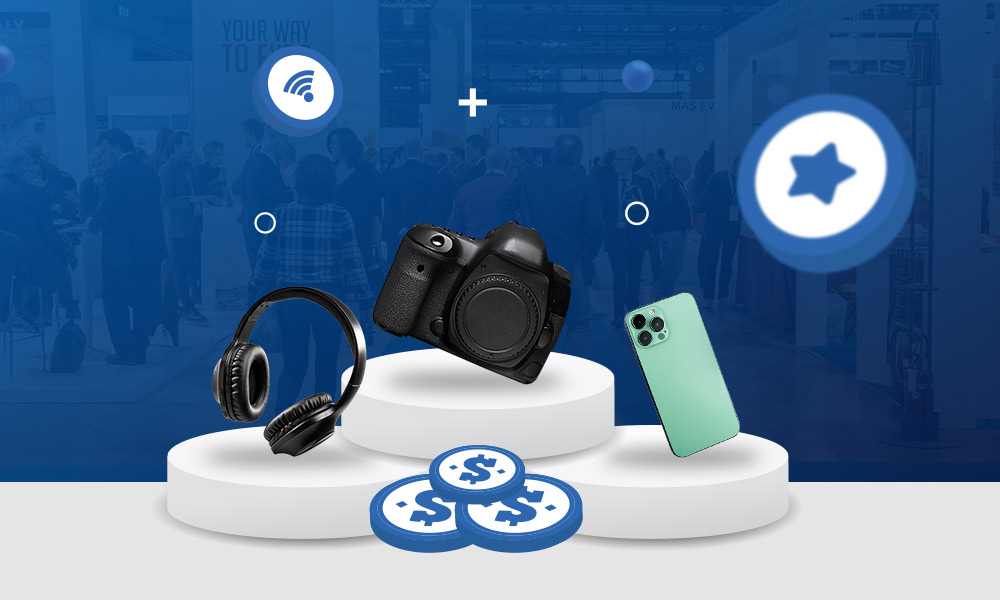Measuring the Success of Your Trade Show Lead Magnets

Measuring the success of your trade show lead magnets is key to making the most of your efforts. Trade shows offer great opportunities, and your lead magnets are designed to capture valuable leads. But how can you be sure they’re working?
In this guide, we’ll cover simple tools and techniques to help you measure the impact of your lead magnets, ensuring they bring real results and help your business grow.
Key Takeaways:
Understanding Trade Show Lead Magnets

At trade shows, lead magnets are powerful tools designed to attract potential customers and encourage them to share their contact information.
These can range from free giveaways to exclusive content, all to create a tangible incentive for attendees to engage with your brand.
Unlike typical business cards, lead magnets capture interest in exchange for valuable information, setting the stage for follow-up communication.
Though often referred to by many names—signup incentives, freebies, opt-in bribes—the core function remains the same: attracting leads.
However, trade show lead magnets are designed specifically for an in-person, event-based context, where immediate engagement and interaction are key.
Unlike digital lead magnets, they often rely on face-to-face connections, making them more dynamic and memorable for attendees.

Key Metrics for Trade Show Lead Magnets
To truly measure the impact of your trade show lead magnets, it’s essential to focus on specific metrics that reflect both engagement and business outcomes.
Tracking these key performance indicators helps you clearly understand what’s working and where adjustments are needed:
Sign-Up Rates at the Event
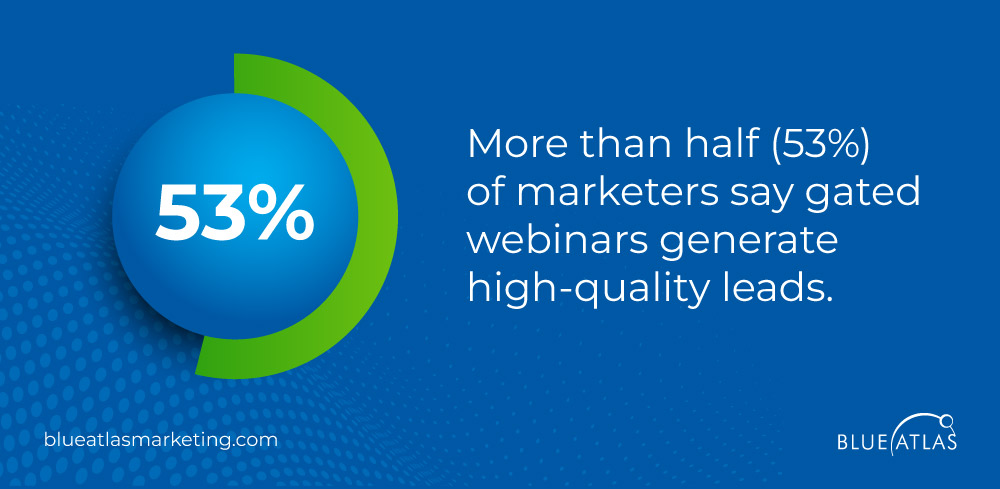
One of the primary indicators of a successful lead magnet is the sign-up rate at the trade show itself.
High-quality lead magnets will draw in many sign-ups, whether for email newsletters, demo requests, or exclusive content.
According to research, more than half (53%) of marketers say that gated content, such as webinars with an online signup form, generates the most high-quality leads at the top of the funnel.
The same logic applies to trade show lead magnets; the more attendees that sign up, the better the magnet is at fulfilling its role.
Tracking the number of daily sign-ups and the overall total can give you immediate insight into your magnet’s appeal.
Engagement Levels during the Trade Show
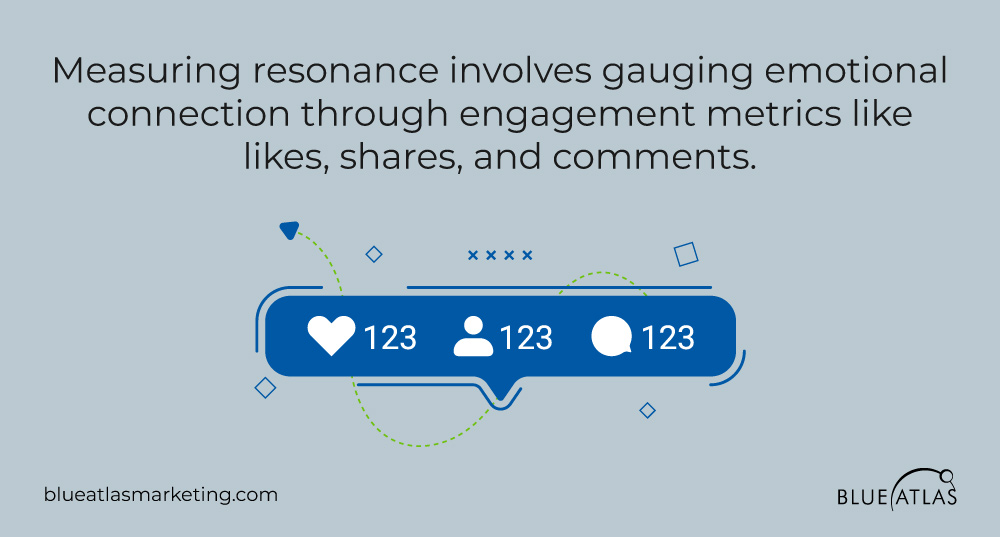
Engagement goes beyond simple sign-ups. It measures how well your lead magnets resonate with attendees on an emotional level.
Engaging content and offers will spur conversation, prompt questions, and encourage attendees to look closer at your booth.
Engagement metrics such as likes, shares, comments, and click-through rates help analyze how well your messaging connects with attendees.
These metrics can be tracked by integrating digital tools at your booth, such as social media monitoring or event apps that log attendee interactions.
High engagement rates often indicate that your lead magnet isn’t just grabbing attention but also fostering meaningful connections, making it easier to convert leads later in the sales funnel.
Conversion to Sales from Trade Show Leads
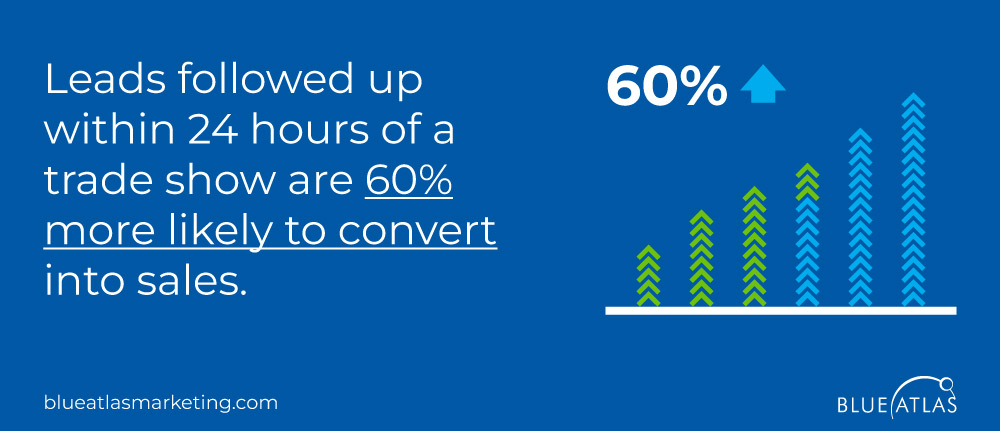
The true measure of any lead magnet’s success is how many leads it converts into sales.
While capturing contact information is important, it doesn’t mean much if it doesn’t translate into real business opportunities.
Leads followed up within the first 24 hours of a trade show are 60% more likely to convert into sales.
This stat highlights the importance of a swift and effective follow-up strategy after collecting trade show leads.
Monitoring how many leads progress into conversations and, eventually, sales can determine if your lead magnet generates the type of leads your sales team can work with.
Cost per Lead Specific to Trade Shows

Trade shows are an investment, and knowing the cost per lead is essential to evaluating whether that investment pays off.
On average, the cost per lead generated at trade shows is $112 . To calculate this, simply divide the total cost of the trade show by the number of leads captured.
While this number provides a basic snapshot, it’s also crucial to look at what each lead is worth in terms of potential revenue.
A high cost per lead isn’t necessarily a bad thing if the quality of those leads translates into long-term, profitable relationships.
Understanding the cost per lead helps you adjust your trade show budget and optimize future events.
Return on Investment from Trade Show Participation
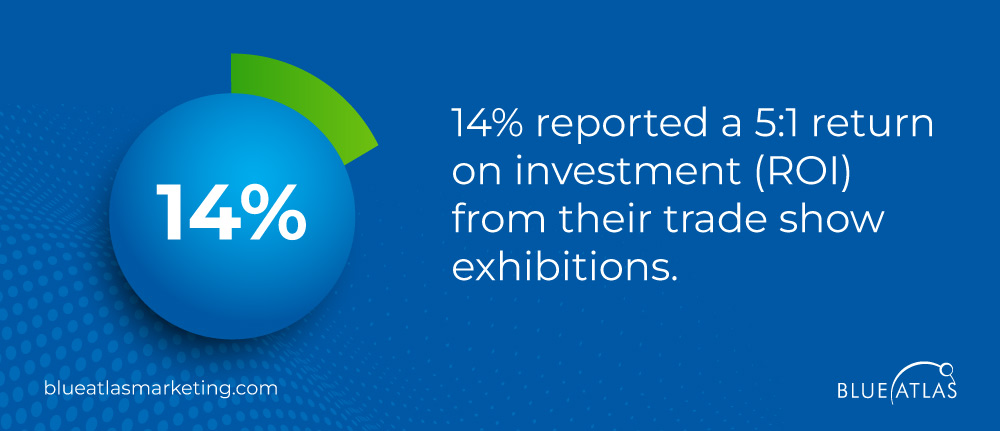
Return on Investment (ROI) is the ultimate metric that pulls all other metrics together.
It tells you whether your trade show efforts were worth the time and money invested.
According to recent stats, 14% of exhibitors reported a 5:1 ROI from their trade show exhibitions, meaning they earned $5 for every $1 spent.
This ROI is calculated by factoring in the revenue generated from leads captured at the show versus the total cost of participation.
A positive ROI indicates that your lead magnets were effective in capturing leads and directly contributing to your business’s bottom line.
Keep in mind that calculating ROI goes beyond the immediate event and can extend into months of sales follow-up, so track this metric diligently over time.
Tools and Techniques for Measurement
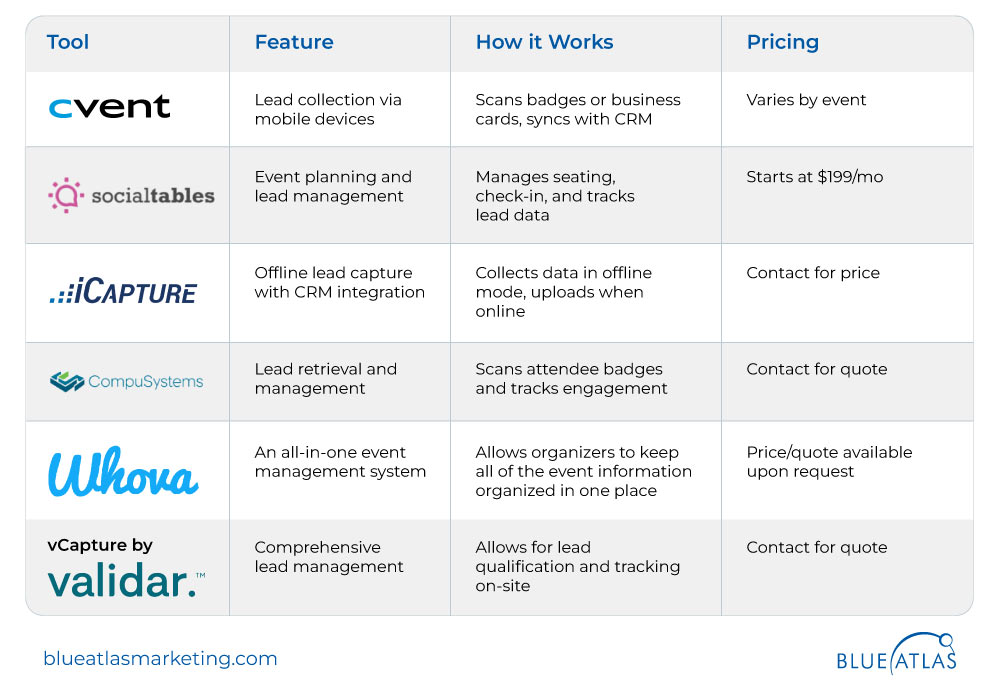
When effectively tracking trade show metrics, several tools stand out for their reliability and ease of use.
Each tool offers unique features to capture leads, measure engagement, and streamline post-event analysis.
Whether you’re a small business or a large enterprise, these tools can help ensure you don’t miss valuable insights.
Below is a table that outlines six recommended tools for tracking trade show lead magnet metrics:
| Tools | Features | How it Works | Pricing |
| Cvent LeadCapture | Lead collection via mobile device | Scans badges or business cards, syncs with CRM | Varies by event |
| Social Tables | Event planning and lead management | Manages seating, check-in, and tracks lead data | Starts at $199/mo |
| iCapture | Offline lead capture with CRM integration | Collects data in offline mode, uploads when online | Contact for price |
| CompuSystem | Lead retrieval and management | Scans attendee badges and tracks engagement | Contact for quote |
| Attendify | Event app with attendee tracking | Tracks attendee behavior through a mobile app | Virtual + event app = $1,999.00; Attendify Package = $4,000.00 |
| vCapture by Validar | Comprehensive lead management | Allows for lead qualification and tracking on-site | Contact for quote |
Once you have the tools in place, the next step is to analyze the data you collect from your trade show efforts.
This process involves more than just looking at surface-level metrics—it’s about digging deeper to understand your lead magnets’ effectiveness and where there is room for improvement.
There are six key techniques for analyzing trade show performance data:
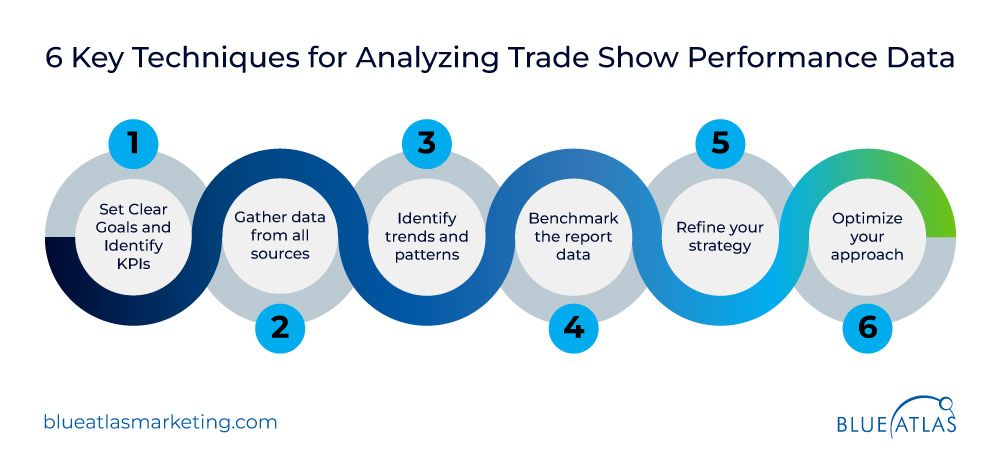
- Start by setting clear goals and identifying the key performance indicators (KPIs) that align with your business objectives.
- Gather data from all available sources, including lead forms, engagement metrics, and sales conversions.
- Use statistical methods to identify trends and patterns that reveal what worked and what didn’t.
- You need to benchmark the report data. Compare your performance to industry standards and past events to gauge success.
- Take actionable steps based on your findings to refine your strategy.
- Continuously optimize your approach by learning from both successes and failures.
Proper data analysis ensures you’re capturing leads and understanding how to convert those leads into long-term business growth.
Making Data-Driven Adjustments for Trade Shows
To ensure continuous improvement, making data-driven adjustments after each trade show is essential, allowing you to refine your lead magnets and maximize their future success.
How to Interpret Trade Show Performance Data
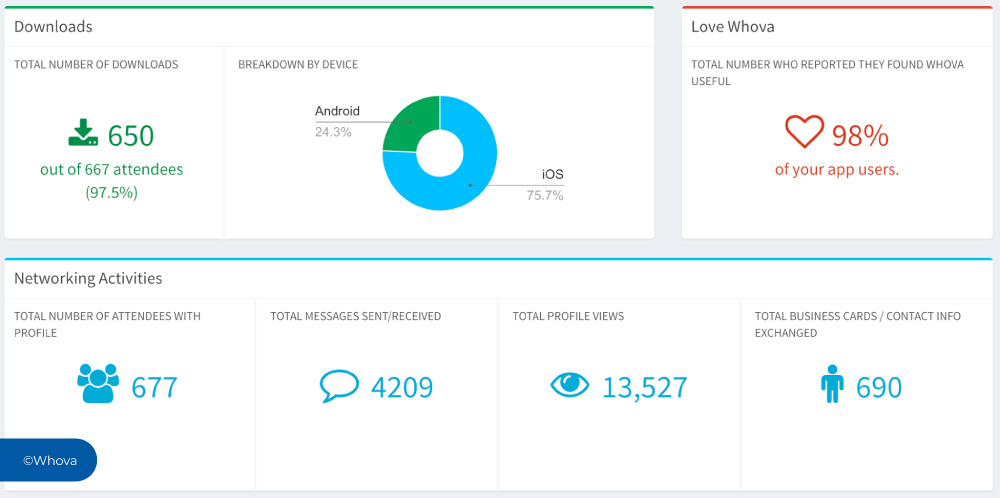
Interpreting trade show performance data is both an art and a science.
You can employ quantitative methods like descriptive statistics, regression analysis, or inferential statistics to measure and compare key metrics.
These methods allow you to test hypotheses and see how your lead magnets performed against set benchmarks.
On the other side of the coin, you can use qualitative methods, such as thematic or content analysis, to explore patterns or themes that emerge from attendee interactions.
Visual aids like charts, graphs, and maps are excellent tools for presenting and communicating your data clearly and engagingly.
These visualizations not only help in understanding complex data but also in making it easier to share insights with your team.
Strategies to Refine and Improve Lead Magnets for Future Events
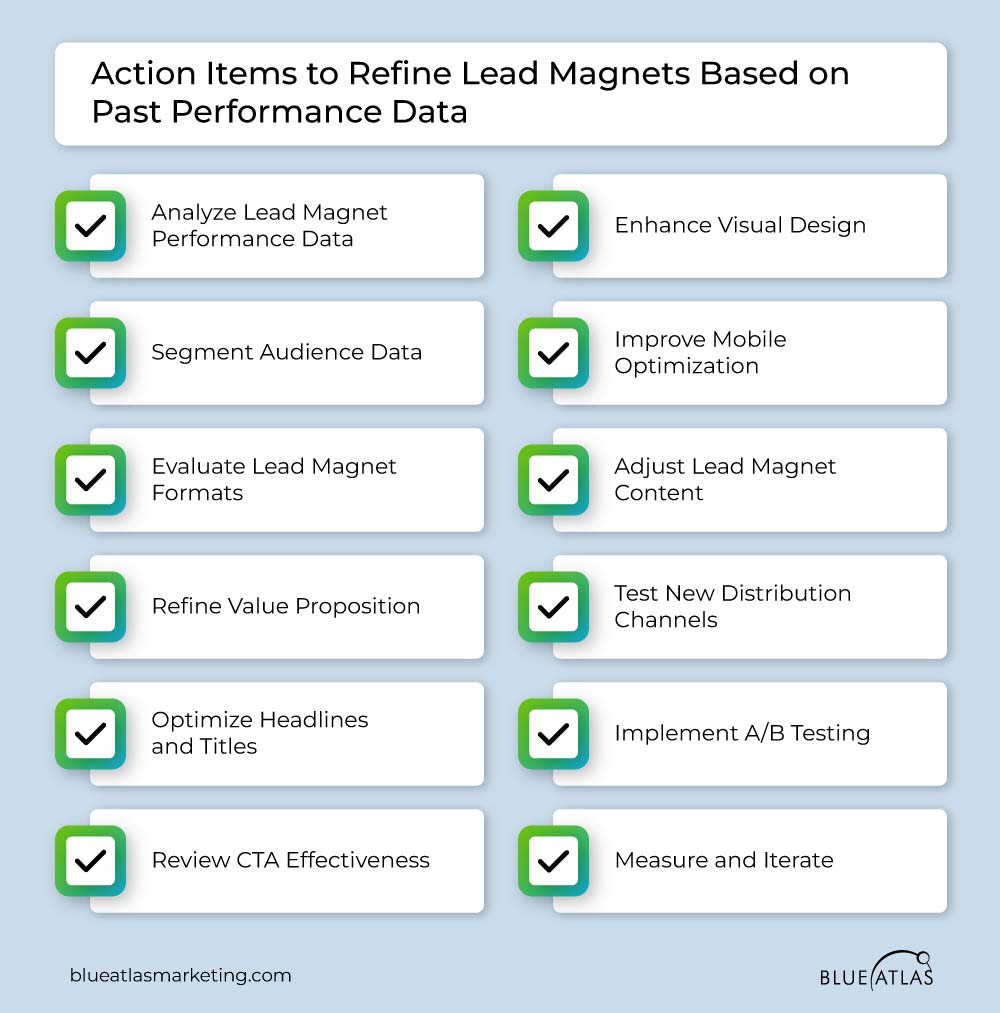
Once you’ve gathered and interpreted your trade show data, the next step is to translate insights into actionable strategies.
Start by summarizing your main findings and comparing them to your initial goals.
What worked well? What fell short? Based on this analysis, you should recommend specific actions to refine and improve your lead magnets for future events.
Whether it’s tweaking the messaging, offering a more compelling incentive, or changing the delivery method, your adjustments should be based on data-driven insights.
Prioritize improvements based on their urgency, feasibility, and potential impact on your future trade show performance.
This iterative process ensures continuous optimization of your lead magnets, making them more effective at attracting and converting leads with each event.
Common Mistakes and How to Avoid Them in Trade Show Lead Magnet Measurement
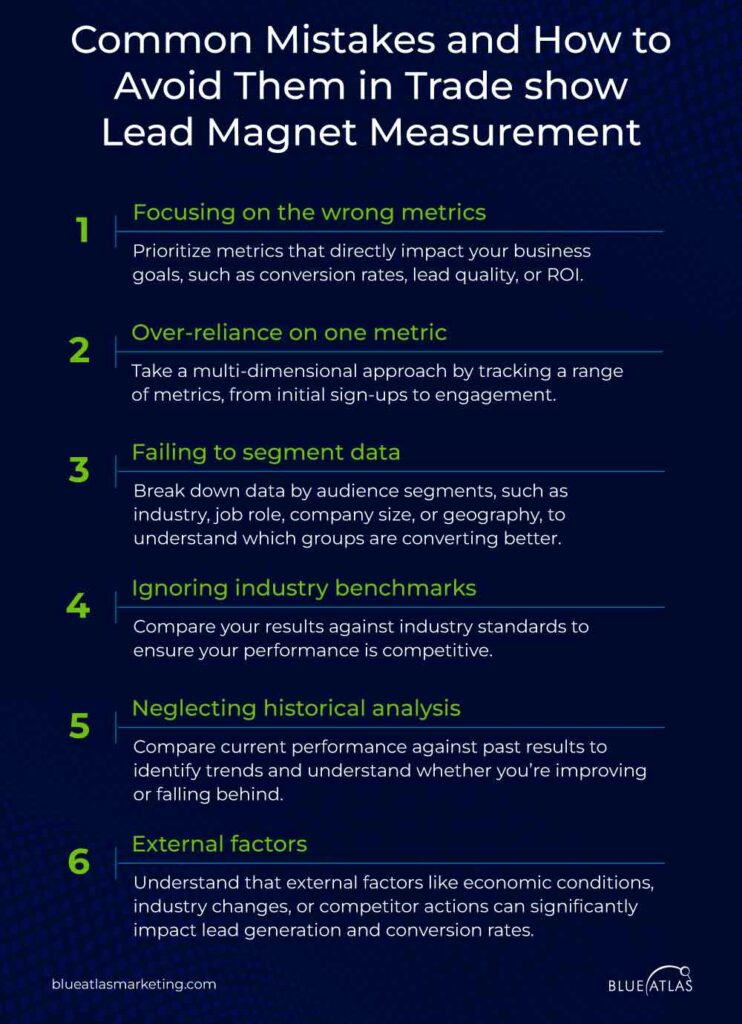
Measuring the success of trade show lead magnets can be tricky, and many businesses fall into common traps that limit their ability to gain actionable insights.
One major mistake is (a) focusing on the wrong metrics—instead of looking at vanity metrics like social media followers, prioritize data that reflects conversions or sales potential.
Additionally, (b) over-reliance on one metric can skew your understanding of overall performance. For example, a high number of sign-ups might seem positive, but without analyzing engagement and conversion, you won’t see the full picture.
Other pitfalls include (c) failing to segment data, (d) ignoring industry benchmarks, and (e) neglecting historical analysis.
These mistakes prevent a deeper understanding of your performance and the ability to compare your results against competitors or past events.
(f) External factors such as economic conditions, industry trends, or competitor presence can also significantly impact results. For instance, a downturn in the economy may lower conversion rates despite high lead generation.
Or it could be a strong competitor with a more attractive offer that draws attention away from your booth. Event-specific factors like timing and location can also affect the outcome.
Always account for external factors and regularly update and improve your strategy based on the data you collect to avoid them strategically!
Frequently Asked Questions (FAQs)
How can I track sign-up rates for my trade show lead magnets?
Use tools like Cvent, LeadCapture or iCapture to track and record sign-ups in real-time. Integrating these tools with your CRM ensures smooth data flow for post-event follow-up.
What are the best tools for measuring trade show lead magnet performance?
Tools like Attendify and vCapture by Validar offer comprehensive features for tracking engagement, lead quality, and conversion rates.
How often should I review metrics from my lead magnets?
Review metrics immediately after the event and at regular intervals (e.g., weekly) to adjust strategies based on lead quality and conversions.
What if my trade show lead magnet isn’t converting?
Evaluate the offer and messaging, analyze attendee engagement, and adjust your follow-up strategy to nurture leads post-event better.
How can I calculate the ROI for my trade show lead magnets?
Calculate ROI by comparing the revenue generated from converted leads against the total cost of the trade show, including booth setup and promotional materials.
Measuring the success of your trade show lead magnets is essential for turning leads into real business opportunities. By tracking the right metrics and making data-driven adjustments, you can ensure your lead magnets are effective.
This approach helps optimize your event efforts and boosts your chances of generating meaningful results from every lead captured. Focus on what works and improve as you go.
Why Blue Atlas Marketing?
Our team specializes in helping businesses transform trade show interactions into long-term success with our expert trade show marketing services. We provide the tools, insights, and strategies needed to optimize your lead magnets and boost your ROI.
Ready to elevate your trade show success? Contact Blue Atlas Marketing today to get started.




